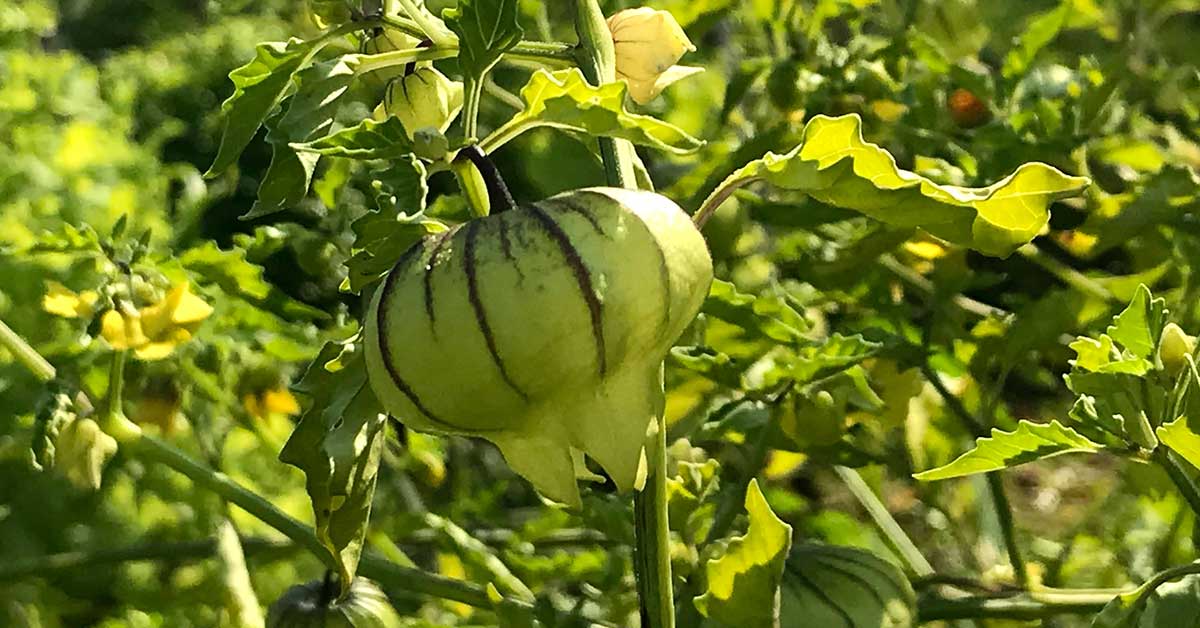I grow tomatillos every year for a variety of reasons. They are a great source of flavor and nutrition, and they can be used in a variety of dishes. Tomatillos are also easy to grow and require minimal attention. Additionally, they are often a main ingredient in Mexican and Latin American cuisine. I like to can all my excess tomatillos to make salsa too! But knowing exactly when and how to harvest tomatillos is key to getting the most out of your crop.
What are tomatillos?
Tomatillos are an annual vegetable that grows to a height of 2-4 feet, with a branching, woody stem. The leaves are ovate, light green, and very fragrant. The flowers are small, yellow-green, and appear in clusters. The fruit of the tomatillo plant is encased in a papery husk and is green when unripe, and yellow-green when ripe.
Tomatillos are native to Central America and have been cultivated since pre-Columbian times. The Aztecs used them to make a green sauce and they were commonly found in Mexican cuisine. Tomatillos were brought to Europe by Spanish explorers in the 16th century and were eventually introduced to the United States in the 1800s. Today, they are widely used in Mexican and Latin American dishes, as well as in many other cuisines around the world. They have a tart, acidic flavor and a papery husk that must be removed before cooking.
Tomatillos are related to tomatoes in that they are both members of the nightshade family. Both tomatillos and tomatoes have edible fruits that have a tangy flavor. Both fruits are used in a variety of dishes, including salsa, sauces, and salads.
How to tell if a tomatillo is ripe
Tomatillos are typically ripe from late summer to early fall. When ripe, the tomatillo’s husk turns a golden-yellow color, and the inside of the fruit becomes juicy and sweet. The skin is thin and easily breaks when squeezed. The center of a ripe tomatillo contains a few small seeds.
How to harvest tomatillos
Harvesting tomatillos is a pretty easy and straight-forward process.
- Wait until the tomatillo husks turn dry, brown, and papery.
- Gently pull the husks off the fruit, exposing the ripe tomatillo
- Check the tomatillo for any signs of damage, such as brown spots or soft spots. Discard any damaged fruit.
- Gently remove the tomatillo from the stem and store in a basket
Storing tomatillos
Tomatillos can be stored in a sealed container in the refrigerator for up to 2 weeks. The container should be lined with a paper towel to absorb excess moisture. Tomatillos left out of the refrigerator will keep for about 1 week. It’s also possible to freeze tomatoes:
- Select firm and unblemished tomatillos.
- Rinse them under cold running water and pat them dry with a clean paper towel.
- Cut off the stems and then cut the tomatillos in half.
- Place the tomatillos on a parchment paper-lined baking sheet in a single layer.
- Place the baking sheet in the freezer and freeze for about 2 hours, or until the tomatillos are completely frozen.
- Transfer the frozen tomatillos to a freezer-safe container or resealable bag and store in the freezer for up to a year.













